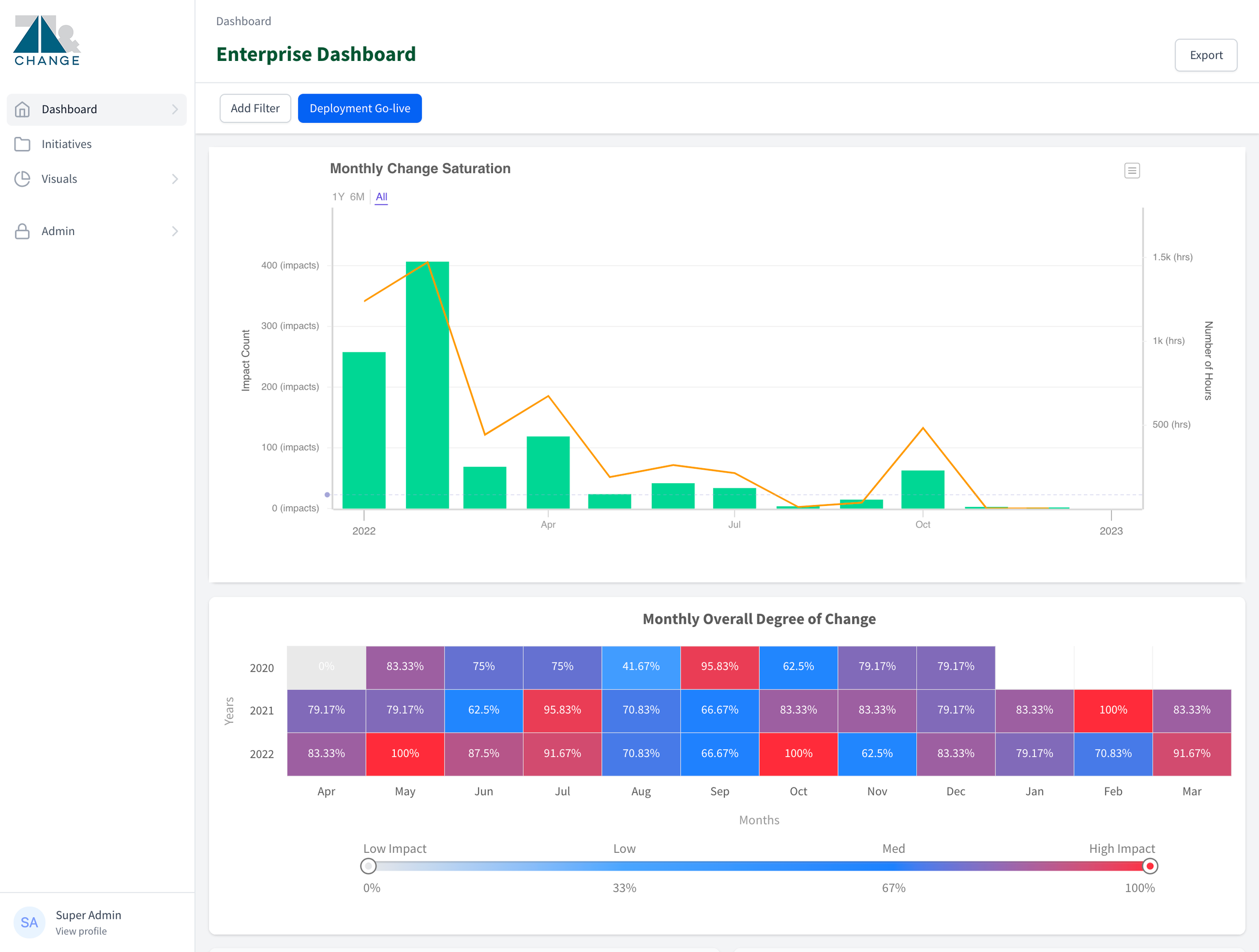Lead Change With The End In Mind
Imagine a world of predictive change! Your organization has multiple enterprise level changes underway…based on historical performance data around readiness and adoption…you know that while these two projects are at risk and require extra attention, these others will successfully meet their desired business objectives. With change measurement, this is the future of organizational change management (OCM).
OCM Measurement Maturity
Whether you’re using paper-based surveys or a sophisticated change analytics tool or platform, it is important that OCM practitioners incorporate measurement into our practice by capturing data. Remember, if you don’t measure it going in, you can’t measure it going out! To begin, it’s great to establish a shared understanding of where your organization currently is along the journey towards data driven change:
Absent: No change data is gathered
Emerging: Some use of change data for change projects exists; lacks shared definitions, process or platform
Functional: Intake, Readiness, & Adoption measurement definitions and processes have been documented and are being used on the majority of large-scale projects
Integrated: An integrated change tool or platform is adopted to manage critical change data components across the enterprise; once source of change truth
Predictive: Modeling adoption rates to determine change saturation levels by business units, teams, and roles
OCM Measurement Model
So, you’re armed with surveys, focus groups, and sticky notes, but what should you measure? The OCM discipline has long understood the direct correlation between managing change effectively and maximizing return on investment (ROI) whether that be increased revenue, decreased costs, or a social benefit.
Change readiness is a key indicator of adoption…
…if adoption lags or is not the level hoped for, the program’s success is impacted…
…if the program is not successful than the organization does not achieve the desired ROI.
Measurement across these three areas will help to inform data driven change programs.
Readiness Scorecard: Measures where stakeholders are along the change curve and provides insight around are they ready for the change
Adoption Scorecard: Measures proficiency and utilization and provides insight as to whether stakeholders have adopted the change or have reverted to the old way of doing things
Success Scorecard: Measures the outcomes per the initial business case and provides insight as to whether the benefits the organization expected as a result of the change are being realized
OCM data can sometimes feel squishy, but that’s OK. The majority of Readiness metrics tend to be qualitative vs quantitative: “I am aware of the change, I understand how the change impacts me, I am ready for the change.” These gather data about perceptions, but it is critical to understand that stakeholder’s perceptions are stakeholder’s reality. OCM data should not shy away from measuring the emotional side of readiness: “I am excited about the change.” This seemingly soft question can be a strong indicator of an easy or hard change journey ahead.
Measuring Success
Believe it or not, an easy way to stump a project sponsor is by asking them how they will measure success: “In scope, on schedule, within budget.” But is that really what the organization set out to achieve when they funded the effort? In addition, setting specific proficiency and utilization targets can make leaders and organizations nervous and uncomfortable: “80% usage by the end of the first month, or is that too high?” OCMers can play a key role by facilitating conversations to identify meaningful metrics to measure whether the needle has moved in the right direction in a way that everyone is comfortable with.
Understand why the change was funded
Define what success looks like
Identify behaviors that need to stop, start, or stay the same to achieve success
Identify metrics to measure that behavior
Rather than define a specific metric target, define whether the metric should increase, decrease, or stay neutral over time
Establish a baseline and then begin to measure!
The responsibility of measurement is often taken over by or shared with project managers, financial partners, or the PMO. It’s not important who owns it, rather that it gets done.
Change saturation dashboard view from 71 & Change's ChangeAnalytics software
Change Fatigue
So, your organization sees the value of understanding the impact of changes across key stakeholder groups, but has concerns that a readiness survey will be “just one more thing” for already saturated people to deal with. When possible, leverage existing employee and customer engagement tools such as employee engagement surveys or net promoter scores. While it can be hard to influence these existing tools, even one change related question can be a game change in terms of providing valuable insight. Catch stakeholders in the moment as part of the normal change process. For example, following a discussion with subject matter experts regarding impacts, conduct a real time pulse survey. Regardless, you still need the change data. Without it you may not know that your stakeholders are frustrated; they will have no opportunity to voice that frustration; you’ll discover that frustration during launch and end up taking five steps backwards, losing time, money, and good will.
So, are you ready to begin measuring change? You may feel nervous or lack sophisticated tools, but every OCMer should incorporate some level of readiness, adoption, and success measurement into their practice. By facilitating conversations with leaders and organizations about what success looks like and how it will be measured, we define effective change management in business terms, and that makes our organizational change management practice very relevant.
Contact ChangeStaffing to learn how our consultants can help you measure change.
A very special thanks to Beth Montag-Schmaltz, Change Management consultant and Principal and Founding Owner of 71 & Change for her thought leadership and for collaborating with us on this blog.

